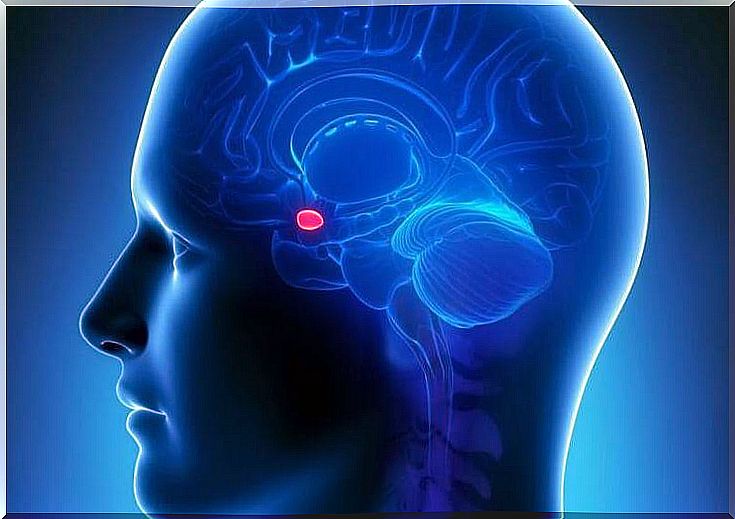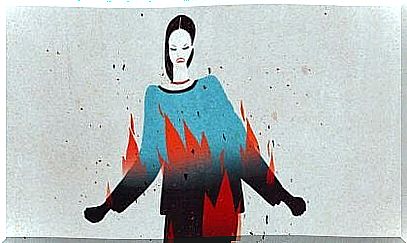The Neuroscience Of Vengeance

Revenge neuroscience tells us that far from turning the page after disappointment, rejection, or what they see as injustice, some people feed off hate allowing them to plan a way to fight back. Thus, far from controlling anger, rationalizing it or having recourse to adequate mechanisms of regulation, they allow the discomfort to become chronic.
As we know, talking about revenge is sometimes complicated and then it can be difficult not to disagree with ethical, moral and even legal aspects. There are acts which obviously require this type of response, but in these cases the courts must do justice, never violence. Nevertheless, what interests us in this article is to deepen the neurological and psychological aspects.
Revenge and psychology
Let’s give an example: those who are passionate about criminal literature no doubt remember Ted Bundy. He was one of the worst serial killers in history. Today, we still do not know for sure the exact number of victims who took their lives. After a series of interviews, psychological and neurological evidence, we discovered much more than a psychopathic personality.
Bundy killed a large number of young people because of a desire for revenge that had been maintained for years. The origin (or the trigger for his behavior) was the feeling of abandonment he felt when his partner left him. This rejection fueled in him a disproportionate and almost savage rage. His anger prompted him to seek victims with the same physical characteristics as the woman who had abandoned him.
As we can see, revenge can act in some people as a clearly aggressive and brutal mechanism. To date, neuroscientists have discovered what are the mechanisms and areas that regulate this type of impulse. It is a subject as interesting as it is revealing. Let’s find more information on the subject.
“Goodbye goodness, humanity and gratitude… Goodbye all the feelings that ennoble the soul. I wanted to occupy the post of providence in order to reward the good. From now on, give me yours, the god of vengeance in order to punish the wicked ”.
-The Count of Monte Cristo, Alexandre Dumas-

The neuroscience of revenge
In one of his works, Shakespeare said: “ When we are insulted… Should we take revenge?” We have all, at one time or another in our life, experienced this feeling. After suffering from a confrontation or bad behavior on the part of someone, it is almost inevitable that you do not want to pass the buck and the pain that comes with it. Feeling and experiencing this desire is neurologically and emotionally normal.
Nevertheless, the majority of us are able to rationalize the situation and after a stage of thought and adapted emotional management, we end up containing ourselves and turning the page. This process that regulates and quenches the desire for revenge is regulated by the cerebral cortex. It is in the dorsolateral prefrontal area (dlPFC) that our personal control processes are activated.
But what happens to people characterized by a vengeful personality?
The wound of rejection and injustice
The University of Geneva carried out an interesting study at the beginning of the year 2018. The neuroscience of revenge today has very solid evidence that shows us very striking aspects.
- Normally when we talk about this type of behavior it is common to refer to processes like anger and rage. However, what causes these types of emotions to appear? The trigger for the majority of revenge seems to be rejection.
- Rejection is an agonizing sensation in which the person feels separated from something that was very important to them. It can be a partner, a job, a family group or a specific group. The individual then does not understand “justice” and he may even end up thinking that society is abandoning it.

Where is the drive for revenge?
Dr. Olga Klimecki-Lenz, researcher at the Interfaculty Center for Affective Sciences of Switzerland (CISA) has located the area in which our urges for revenge are concentrated, so to speak.
- This structure that activates the feeling of anger is well known: the amygdala
- Through a series of magnetic resonance tests, it has been empirically proven how such a small structure activates when we experience confrontation, argument, deception and the pain of rejection.
- It should be said that in this type of situation we first feel “fear”.
- The sense of security and trust we had in a person breaks down and fear and anguish instantly appear. After that, anger arises, then the urge to implement some kind of punishment.
- In addition, this punishment establishes a reward system. The person can feel “pleasure” in taking revenge and applying the same pain to others.
- In addition to the amygdala, the upper temporal lobe is also activated. These two areas intensify the need to bring an act of revenge to life. However, the most interesting thing is what happens next.
- When both structures activate, activity in the corsolateral prefrontal cortex quickly arises. The reason ? This helps calm emotional intensity and promotes personal control.
This last information undoubtedly opens the interesting possibility of reducing violent acts and acts of revenge through magnetic stimulation. Nevertheless, as we know, aggressive behaviors like those characterizing serial killer Ted Bundy depend on many factors that are not always explained by neurobiological factors.
The fascination with the psychology of revenge
From a cultural and even psychological point of view, revenge is an interesting dimension. We also have at our disposal masterful works such as the Count of Monte Cristo in which Alexandre Dumas demonstrated to us the fact that revenge is a dish that is eaten cold and that can be applied after years. However, there is one essential aspect that we should not ignore. People who regularly engage in this type of behavior exhibit a lack that scientists such as Kevin M. Carsmith, Timothy D. Wilson, and Daniel T. Gilbert have demonstrated: a lack of empathy.
If we ask ourselves why this type of profile characterized by an almost constant need for revenge for what is considered “injustice” exists, psychology gives us an answer. This profile almost always responds to the same pattern: people who are narcissistic, uncertain, with low emotional regulation, with a low capacity to forgive and an absence of empathy.
To conclude, it is worth thinking for a moment about a very simple idea: we have all felt at some point a desire for revenge. However, the decision that makes us stay calm, to be careful, is what makes us human, what makes us noble.








